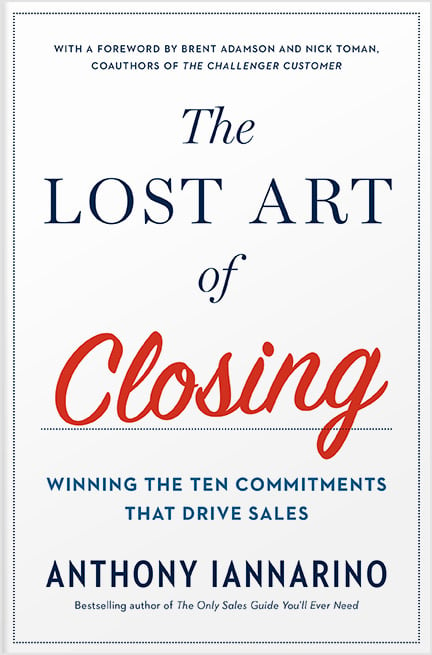The Gist:
- Some language choices are more effective than others.
- Arguing about your profitability when competing with a lower-priced competitor is not a powerful enough argument to change your client’s mind.
- The investment your client needs to make is for their benefit, not yours.
There are always choices about what you can say to a client. The words you use can make it easier or more difficult to win your client’s business. Good, effective choices can speed you to a closed deal. Poor choices can make it more difficult or prevent you from winning a client’s business.
Some of the language choices we make are no longer as useful or helpful as they once were. When this is true, you need to find new talk tracks that improve your results. Talk tracks we’ve used in the past are no longer right for a modern, consultative approach to sales.

Money Talks
After spending weeks or months pursuing your dream client, your main contact calls to tell you that they prefer to work with you and that the only obstacle is your price. They offer to help by sharing your competitor’s lower pricing, asking you to match it. The number they give you is a non-starter, and you know there is no way to get close to that pricing. There are many reasons you might find yourself in this position, but it’s probable that two factors contributed the scenario you find yourself in now.
First, you might have done a poor job of differentiating your model from your competitor’s delivery model, allowing your client to believe there is no difference between your company and your competitors.
Second–and almost certain to be true–you didn’t tell your prospective client that you were likely to have a price that is slightly higher than alternative choices they might make, justifying the delta between your price and the lower-priced competitors. This is easier and more effective early in the sales conversation, as it allows you to operate on your front foot, instead of defending your higher price later.
However, you got to this point, you now have to try your best to do something to allow you win your client’s business.

Your Appeal Lacks Appeal
You might start your rebuttal by complaining to your client that you cannot match your bottom-feeder rival’s pricing, using the words that have been used for many decades now: “We’re in business to make a profit,” or something that rhymes with that statement.
The statement itself is mostly incorrect. You are not in business to make a profit. You are in business to create value for your clients and customers. If you run a good business, you will be profitable. But let’s be clear about how value creation and value capture works. If you create value for someone, you are entitled to capture some fair share of the value you create. You have the right to be profitable and doing otherwise will see your company disappear from this planet.
The problem with the mindset “in business to make a profit,” is that it doesn’t change the fact that your competitor has promised to create the same value at a lower price. Your contact isn’t concerned with your profitability; they’re concerned with their results and their profitability. Instead of making the appeal about your profit, make the appeal about their results and their profitability.
It’s Not About You
“It’s not about me. It’s not about her. It’s all about you.” – The Rolling Stones
Even though you will have a more difficult time arguing after the fact, you are still better off justifying the higher price you charge as benefit to your client than asking them to be concerned about your profitability (although I will tell you how to do that later).
To execute better talk tracks, start by going back over the ground you should have covered earlier in the sales conversation. You might start by saying, “I am sure you that other companies provided you with lower prices. Please forgive me for failing to share with you the difference between our approach and the greater investments we make to ensure you succeed and generate the better results you need. Without these investments, you won’t get the same results and you’ll experience higher costs.”
You are going to need differentiate your approach and the greater investments you make in producing those results. Because you take clients away from your lower-priced competitors, you know what they do different and why their clients hire you to clean up their messes.
You can say something like, “We wouldn’t recommend that you take money out of your solution because it prevents your partner for making the investments that ensure your success. This is true no matter who you choose as a partner. There isn’t any way to make those investments that price, but here is what we can do for you if you can do this.” This approach allows your contact to say they saved the company some money, and because it’s a negotiation, you asked for an additional year on the contract.”


No Profit
A friend of mine was negotiating with a very large client. The contact was aggressively negotiating for a lower price. My friend called me to tell me he was going to blow up the deal and walk away, because he would literally be losing money. I recommended that he call the client and explain why a low price would cause him to lose money, making him unable to provide the services the client needed. The client apologized, explaining that he had no idea what the right investment was and signed the contract after he understood the difference in approach and investments.
You are better off preventing this conversation by addressing these things much earlier. If you encounter the same problem repeatedly, you have evidence that you need to be proactive in avoiding it in the future. You are also better off making the investment about your client’s results than making it about your profit.
Your clients seek certainty. Underinvesting in the results they need creates risks and uncertainty.
Do Good Work:
- Pay attention to the things you say that are self-oriented. Recognize the impact it makes–or fails to make.
- Identify all the ways the greater investment is necessary to the better results your client needs.
- In all cases, make sure that your language choices about price provide them with certainty of outcome and how a lower price puts those results at risk.










.jpg?width=768&height=994&name=salescall-planner-ebook-v3-1-cover%20(1).jpg)


